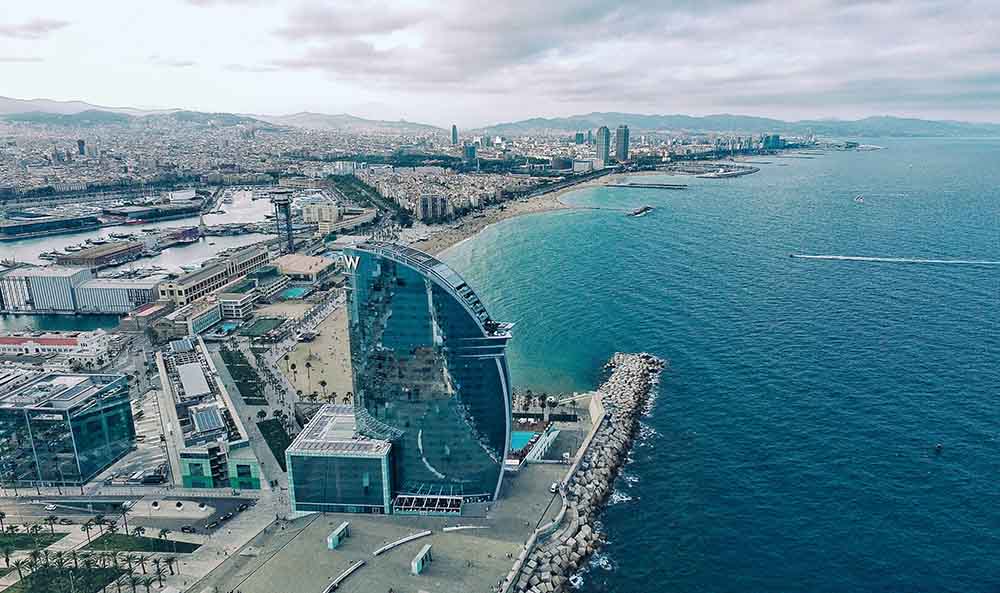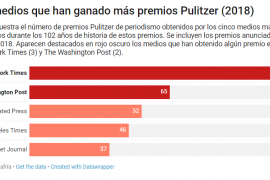[dropcap letter=”I”]
n the last local elections, the crux of the debate was to define what Barcelona we need to live in now, while everything seems to show that the next ballot will be to determine which Barcelona we want to project for the future. The jump from one pivot to the other is a leap that goes from the need that arose in 2008 as a result of the economic crisis, to the hope of seeing a feasible project for a new, more competitive, inclusive Barcelona. The point is to offer citizens a city project that will encourage them to get out and vote.
Beyond the ideological contest with more or less feasible proposals on offer, there is a mood in the air among the inhabitants of Barcelona which might be compounded as a need to clearly know which city we will inhabit in the next twenty years. This means a new Barcelona that will be the result of having successfully faced change, adapting our current notion of mobility, connectivity, identity, trade, consumption, governance of public institutions, security, demography or culture. To understand the evolution of the city, consider Walter Benjamin’s approach in his article Paris: Capital of the Nineteenth Century which described the new elements that then gave Paris the status of world capital.
ROUTINE OR EXPERIENCE
In the same way shopping arcades shaped the appearance of the streets of Paris in the nineteenth century and marked the beginning of a new era characterized by new forms of consumption, the concept of a shop identified as a space to buy a product directly through the intermediation of a seller will, in the 21st century, give way to spaces/experiences like the Apple Store at Plaça Catalunya. You enter the premises as if it were a temple. As you go in, you have to climb a flight of stairs that leads to a place of repose and technological communion. Another example is the new offices of “la Caixa”, where users enter a blue world, quiet and pleasant, without the hassle of queuing, of waiting for your turn. This is the disappearance of the space just for shopping, gradually becoming an experience in which the buyer/user has the impression of acquiring a lasting legacy, with a narrative to share with others.
At the famed Santa Eulalia fashion shop, which celebrated its 175th anniversary this year, you can buy a tie or perfume, or have a meal surrounded by an excellent collection of photographs worthy of a contemporary art gallery. The same goes for Merci de Paris or the now closed Colette. The evolution of the spaces in the city, both private and public, in constant mutation, points to a future that will be more suitable for those who seek unique moments than for those who love routine. The city must be ready to make constant developments in a perpetual flux beyond the ephemeral. Cities in an uninterrupted process of being.
FESTIVALS OR CREATIVE PLATFORMS
One of the main creative contributions of the city of Barcelona has been the launching of art projects supported by the idea of musical festivals or exhibitions of visual arts, leading to creative platforms that go beyond the closed experience of a single event limited in time. The Sònar festival is a clear example of this understanding of new forms of leisure and knowledge. At the Sònar electronic music festival you can listen to music, attend an exhibition, watch creative processes or see the latest technological trends.
The city of Barcelona resides halfway between the tradition of the festivities of Gràcia or La Mercè and the creative and innovative platforms of festivals such as Sònar or Primavera Sound. In the future, cities will have to be able to commission creative projects independently of public management, designing new ventures for events in the city, to rethink their place on the international stage and to propose a new presence in the world.
One of the main challenges of modern cities is determining whether it is to be governed by the citizens’ emotions or by those responsible for policy. We should consider that it is not only social and political movements but also social groups such as cyclists, taxi drivers, or other collectives who have succeeded in redefining the city we live in without the citizens being able to participate directly in the debate
ON FOOT OR BY VIDEO GAME
The exponential growth of video games, whether for leisure, education, medicine or sports, has positioned Barcelona as one of the European capitals of the industry, alongside Madrid or Paris. It should be pointed out that a city associated with a business model that operates globally, without borders and with constantly evolving technology from both the creative and economic point of view, demonstrates the need to prioritize talent and guarantee education and training.
The video game industry is symptomatic of the change influencing both gamers and developers. What is at stake is the support for an industry, seeing that it is the tip of an iceberg of just one further global change that the city will have to face. A change based on the fact that the citizens will establish parameters of conduct that will have to be reflected in the municipal policies of their city. The video game scene must be interpreted as a metaphor for a world that relates from a distance, adapting more rapidly to changes in consumption, moving through international networks and forging new forms of human relationship.
BARRICADES OR A NEW MANAGEMENT OF THE PUBLIC SPHERE
Within very few years, the border between private and public space has been eliminated because of the economic crisis, social inequity, and the crisis of parliamentary representation. We find that the difference between inside and outside has been blurred. Cities must learn to redefine the public space so that it can maintain its public character and not become the property of just those with the wish to express themselves. One of the main challenges of modern cities is determining whether it is governed by citizens’ emotions or by those responsible for policy. We should consider that it is not only social and political movements but also social groups such as cyclists, taxi drivers, or other collectives who have succeeded in redefining the city we live in without the citizens being able to participate directly in the debate.
Defining public space also implies being able to define the virtual public space, which must also be of a balanced nature and used responsibly. The cities of the future should plan their growth to be able to control the public sphere while guaranteeing the private.
These are some of the questions Barcelona must be prepared to discuss in order to become aware of the need to adapt to the change that has already begun to define the reality of many cities.






















